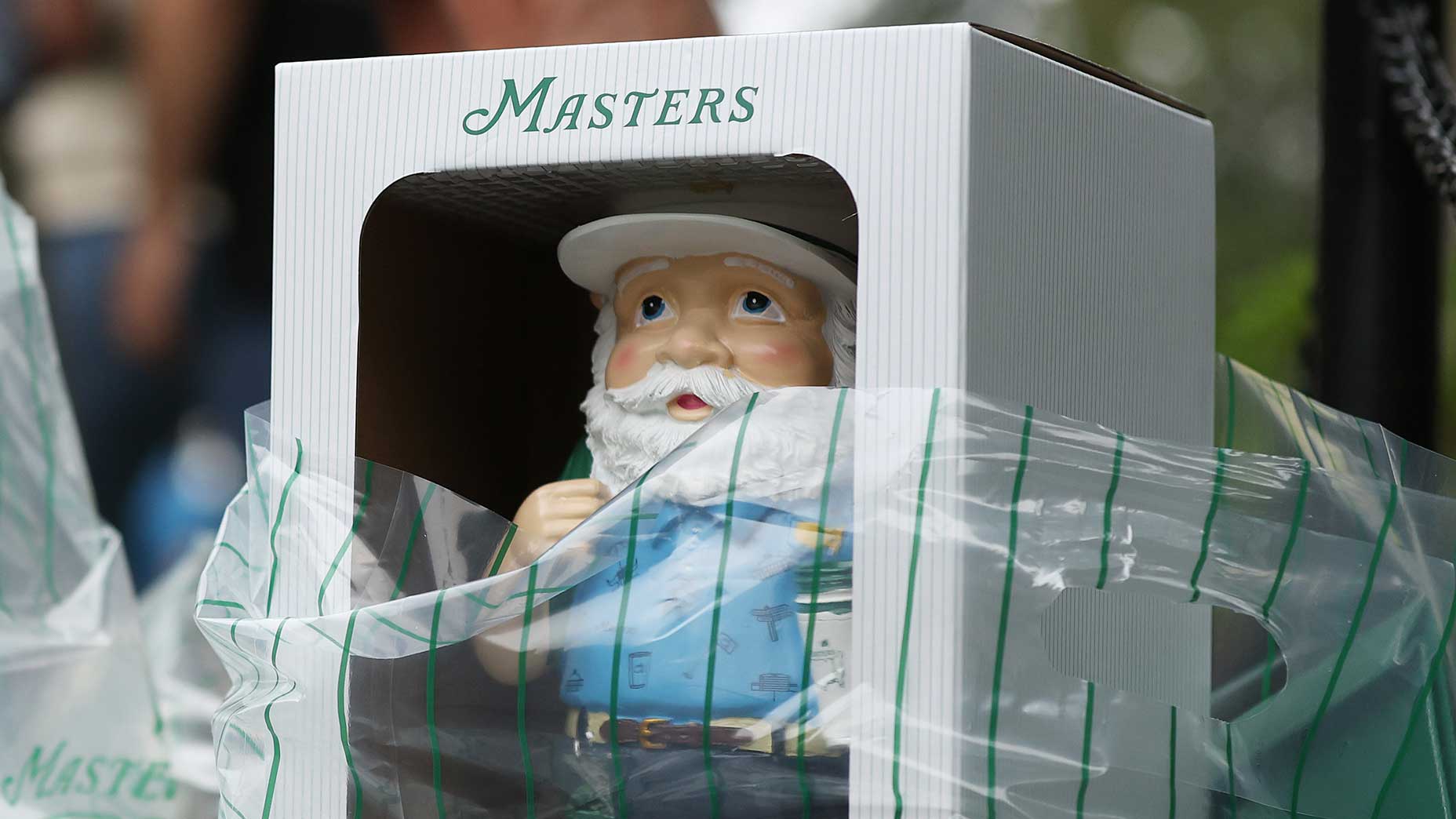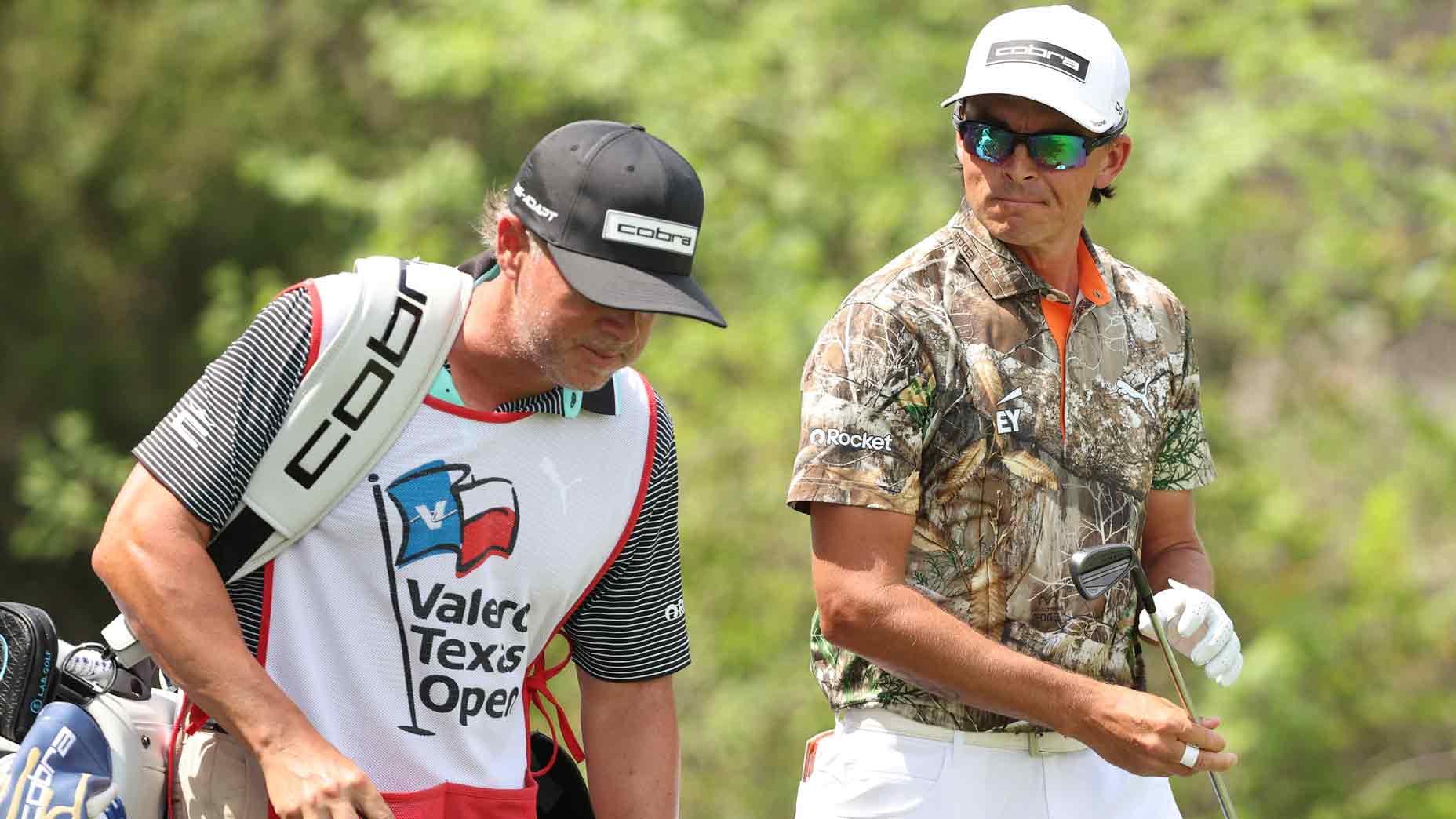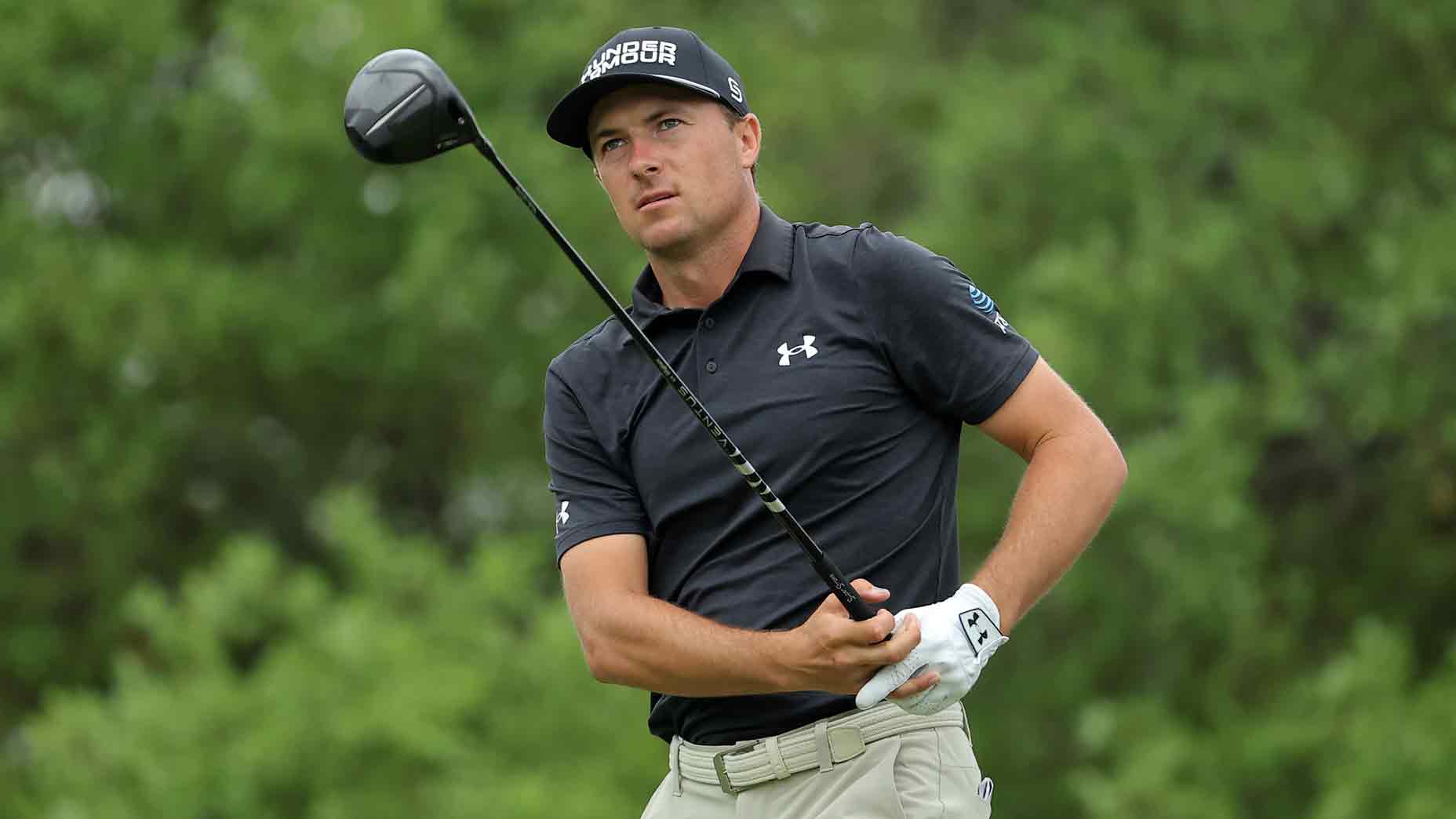Exclusive excerpt from Tiger Woods by Jeff Benedict and Armen Keteyian. Published by arrangement with Simon & Schuster, Inc. Copyright © 2018 by Jeff Benedict & Associates, LLC and Lights Out Productions, LLC. [image:14091459]
*****
The approach to the Newport Country Club, in Newport, R.I., is a bit like coming upon the set of Downton Abbey — majestic, with a breathtaking sense of grandeur built with old money. The club, situated on 140 acres of farmland overlooking the Atlantic Ocean, was established in 1893. Two years later, in 1895, it hosted the first U.S. Amateur championship and the first U.S. Open. For the 100th anniversary of the U.S. Amateur, the tournament was returning to its birthplace.
By 1995, Tiger Woods, age 19 and a sophomore at Stanford University, had already visited many of the greatest courses in America, but this was his first trip to Newport. From the balcony off the second-story locker room in the clubhouse, he could look out over the first fairway and see all the way to the water. It was a view normally reserved for members of a very exclusive club.
Tiger was joined in Newport by Butch Harmon. For the past two years, Tiger had been working with the celebrated instructor to refine his swing and learn new shots. He was also accompanied by his father, Earl Woods, who’d shaped his son’s career from when Tiger first picked up a club at just 11 months old. Not all of the guidance was helpful. Earl consistently tried to inject a racial angle into Tiger’s golf narrative. Immediately after he had won his first U.S. Amateur, a year earlier, at TPC Sawgrass, Earl compared him to boxer Joe Louis. “Louis was the catalyst that gave black people pride,” Earl said. “He kept us going despite all the racism. It is repeating itself now with Tiger. Black people from all over the country tell me how proud they were to watch Tiger perform in the U.S. Amateur.”
When it came to social activism, Tiger didn’t want to be that guy his father was always talking about. As a college kid he preferred to avoid controversy. It was tiring to always be compared to his father’s heroes. Tiger’s mother, Kultida, blamed her husband for putting Tiger at the mercy of unwarranted expectation and scrutiny by constantly placing her son on a pedestal. Whenever Earl told the press that Tiger was like this civil rights leader or that athlete who broke color barriers, Kultida referred to Earl’s pontifications as “old man bullshit.”
At Newport, Tiger was interested in writing his own history: He hoped to join Bobby Jones and seven other golfers in the record book as a back-to-back winner of the U.S. Amateur. One of the shots Butch Harmon knew Tiger would need to succeed on Newport’s gusty track was the knockdown, a low-flying punch used mainly for control in windy conditions. Tiger had yet to try the shot in a tournament setting, but Harmon insisted that, to win at Newport, it would be critical to his chances.
*****
Tiger arrived at the Newport Country Club with a police escort for the start of the final day of match play. The crowds had swelled to the thousands, largely thanks to Tiger’s presence, and there were concerns about his safety. Looking straight ahead, Tiger didn’t say a word as his security detail cut a wedge through the throng of people who had turned out to see him. Stepping to the first tee, Tiger relished the opportunity to make history.
The one man who stood in the teenager’s way was George “Buddy” Marucci, a 43-year-old Mercedes-Benz dealer from Pennsylvania playing like a guy with nothing to lose. Tiger was one-down after the completion of the day’s first 18 holes.
[image:14091384]
With a couple of hours to go before the start of the final round of the afternoon, Tiger retired to the clubhouse. While Marucci showered and joined club members for lunch, Tiger isolated himself. On a couch outside the ladies’ locker room, he put his head back and closed his eyes. For an hour he spoke to no one, choosing instead to practice the mind-relaxation exercises taught to him by his sports psychologist/caddie Jay Brunza. When Tiger emerged for the final round, he had on a blood-red golf shirt, a red-brimmed Stanford cap and a no-nonsense, steely stare.
Marucci opened the second half of match play by winning the 19th hole to go up two. But by the time Tiger stepped to the 18th tee for the 36th and final hole, he held a one-up lead. Using a 2-iron, he drove his ball over a fairway bunker, leaving himself about 140 yards to the hole. He faced a big decision. Marucci’s ball was already on the green in two, and he would have a 23-foot birdie putt that could force extra holes. Tiger’s shot was uphill, a situation that called for a pitching wedge or a 9-iron. Instead, Tiger asked Brunza for his 8-iron. It was time to attempt the knockdown shot he’d been working on all summer with Butch Harmon.
Tiger lifted his ball over the flag, dropping it 14 feet behind the hole. But the backspin, coupled with the terrain, drew the ball within 18 inches of the cup. The crowd erupted, but no one was more excited than Tiger. Moments later, he dropped his ball in the hole, winning his second consecutive U.S. Amateur title. After a long, tearful embrace with his father, Tiger yelled to Harmon.
“Did you see it, Butch?” he shouted. “I did it! I did it!”
“I told you you could, Tiger!” Harmon said. “I told you you could.”
*****
When he was handed the Havemeyer Trophy, Tiger smiled and held it over his head. “This one should be dedicated to the Brunza family,” he said, turning toward his caddie. “This one’s for you, Jay.”
Brunza started crying. A month earlier, his father had passed away. The fact that Tiger remembered Brunza’s father in such a triumphant moment was a thoughtful gesture. It was a standout moment for Tiger, appearing humble in the aftermath of such a significant achievement.
Afterward, in the merchandise tent set up in front of the clubhouse, Tiger was surrounded by tournament officials, senior club members, Harmon and Sports Illustrated writer Tim Rosaforte, who was on hand to chronicle the historic moment. Tiger’s father, Earl Woods, was there too. But on the way to the tent he had wandered into the bar and downed a few drinks. Harmon poured champagne into the Havemeyer, and everyone applauded. Tiger didn’t drink from it, but Earl did. Then he took the trophy from Tiger.
[image:14091382]
“How do you like this, Bobby Jones?” Earl said, hoisting the trophy above his head as if it were his. “A black man is the best golfer who ever lived.”
Everyone stopped clapping, and an awkward silence amplified Earl’s voice.
“Bobby Jones can kiss my son’s black ass,” Earl continued.
Tiger’s youthful smile quickly faded as he stood by stoically during his father’s two-minute rant. Observers stared down at their feet in stunned disbelief. At 19, Tiger had just won his second straight U.S. Amateur in dramatic fashion. What should have been a moment of pure joy for him and unspeakable pride for his father had been tarnished by an outburst of anger, resentment and bitterness. As Earl wound down by predicting his son would have a bigger impact on golf than Jack Nicklaus, Bill Harmon — Butch’s brother, and the club pro at Newport — reached into his pocket and rubbed a round chip between his index finger and his thumb. A recovering alcoholic, Harmon was celebrating his third anniversary of sobriety that day. Hours before the start of the final round of the tournament, he had gone to a meeting, where he received his three-year chip. Looking at Earl, he saw something familiar. “That’s how I acted when I was drinking,” he thought to himself. “Boy, this is all I need to know about being on the right path.”
Rosaforte faced a dilemma. If he wrote verbatim what Earl had said, the ramifications would be potentially devastating for Tiger. In addition to being difficult to explain, Earl’s racially inflammatory comments could unfairly stigmatize Tiger, prompting corporate America to hesitate when considering whether to sign him as a spokesman once he turned pro. Instead, Rosaforte handled the situation with class, choosing not to complicate Tiger’s future. His piece, titled “Encore! Encore!”, appeared in Sports Illustrated days later. It began with the scene in the merchandise tent:
“I’m going to make a prediction,” Earl Woods said Sunday night, as champagne both tingled and loosened his tongue. “Before he’s through, my son will win 14 major championships.”
America’s most prominent golf father clutched the Havemeyer Trophy, from which he was drinking, and looked around the empty merchandise tent near the clubhouse of the Newport (R.I.) Country Club. The handful of friends and autograph seekers laughed and cheered. His son, 19-year-old Tiger Woods, smiled too — but bashfully. It’s embarrassing when Dad blurts out your own secret thoughts.
After graciously thanking everyone at the Newport Country Club, Tiger got into the backseat of a vehicle driven by Brunza. Earl was in the passenger seat. Clutching the trophy, Tiger said little. Then Earl announced that he needed to relieve himself. Brunza pulled into a convenience store parking lot. Earl had been inside for a few minutes when Tiger entered and found his father hitting on a young woman who was working behind the counter. Tiger knew what to do.
“Pop, c’mon,” he said quietly, leading his father back to the car. “You can do better than that.”
It would not be the last time that Tiger filled the role of father and Earl filled the role of the son.
Tiger Woods by Jeff Benedict and Armen Keteyian will be released March 27. You can pre-order a copy here.






